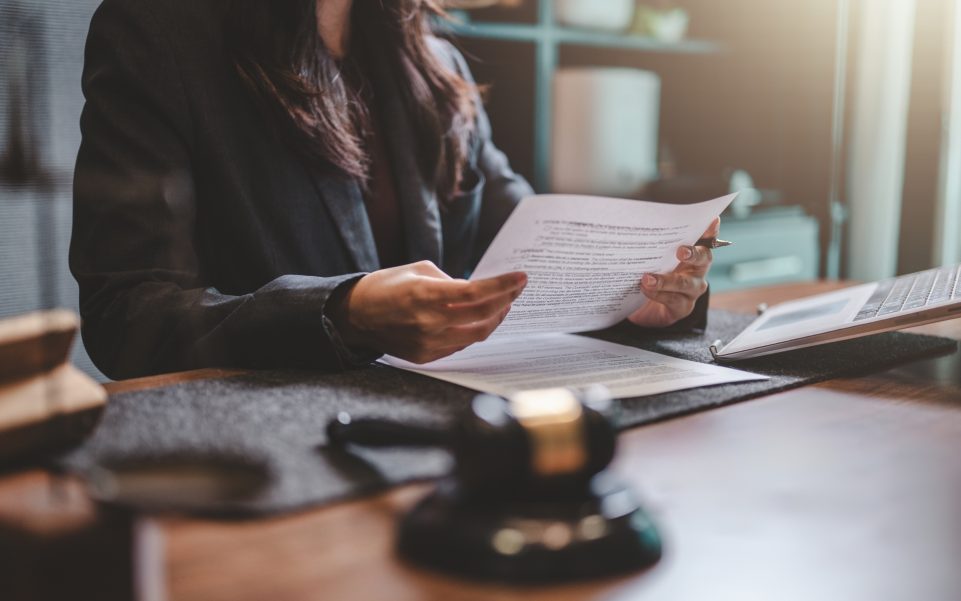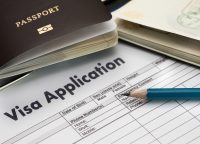The modern judicial system in the UK

The United Kingdom, being a United Kingdom, in many ways leaves considerable freedom to its subjects. Therefore, three judicial systems exist in parallel in the Foggy Albion: the Courts of England and Wales, the Scottish Courts and the Courts of Northern Ireland. All of them are subordinate to the Supreme Court UK in all matters. The Scottish criminal cases fall under the exception: in this vertical the Supreme Criminal Court of Scotland has the final position, its decisions are not subject to review. The judicial power of the UK is quite unusual for the perception of citizens of other countries, this article will help to understand this unique, historically established system.
Historical differences between the courts of the United Kingdom
Apart from the obvious difference in the trinity of judicial organisation, there are a number of features that distinguish Foggy Albion from most other European countries:
- The judiciary in the UK is not based on Roman law, from which many systems in other countries have evolved. Court hearings are decided by analogy with the decisions of previous similar cases – based on past precedents;
- All courts are divided into two types, higher and lower;
- While other countries appoint judges through an electoral process, in the UK this responsibility rests entirely with the Crown and local government;
- Previously, the House of Lords, founded in the 14th century, exercised supreme power in the country. In 2009, the judicial system in the UK underwent a change – the UK Supreme Court was organised, replacing the House of Lords and hearing appeals from the lower courts;
- The Judicial Committee of the Privy Council (JCPC) is the highest court of appeal for the UK’s 14 overseas territories, which are under its sovereignty but not part of the country.
Courts of Justice in England and Wales
This system is traditionally divided into higher and lower courts. The higher ones are subdivided into:
The High Court in London, as well as the Court of Appeal and the Crown Court, are the highest courts in England and Wales (EWHC).
- The High Court consists of the Queen’s Bench Division, the Family Division and the Chancery Division. The Chief Justice of the High Court is appointed by the Lord Chief Justice of the Criminal Division of the Court of Appeal.
- King’s Bench Division – run by the President and is a large division of the High Court with 71 judges. It consists of various specialised courts:
- The Commercial Court has broad powers over matters relating to banks, international credit and trade.
- Admiralty Court – deals with maritime law cases, such as those involving ship collisions, salvage or the carriage of cargo. The court can sue a ship directly, seize it and its cargo, even sell it within the jurisdiction of England and Wales.
- The Technology and Construction Court deals with issues related to all phases of construction, engineering disputes, information technology related areas.
- The Administrative court fulfils a supervisory function, i.e. it checks the work of lower courts, tribunals, and conducts judicial reviews of decisions taken by state bodies. It has jurisdiction over civil and criminal cases. It also includes the Planning Court, which is responsible for judicial review of the findings of planning authorities. It is also responsible for the control of building permits, the recognition of rights of way and environmental legislation.
- However, there are District Commercial Courts, which allow for quicker resolution of local commercial disputes.
- The Family Division deals with a limited number of cases, such as international child abduction and cases within the domestic jurisdiction of the High Court. More often than not, the judges of the Family Division and the Family Court do not wear judicial robes and the case is conducted more informally, which is different from the Criminal Court. This approach is aimed at preserving sensitivity and minimising the distress of the litigants.
- The Chancery Division is headed by the Chancellor and specialises in business law, trust law, inheritance law, Insolvency and Companies List, and land law. The Chancery Division also receives taxation cases and is home to the Patents Court and the Intellectual Property Enterprise Court (IPEC).
- The Court of Appeal deals with appeals from other courts and tribunals. It is based at the Royal Courts of Justice in London and has two divisions, civil and criminal, which hear appeals in a wide range of cases, not excluding family justice. A number of senior judges are represented by: the Lord/Lady Chief Justice of England and Wales and the heads of divisions of the High Court. In addition, there are a maximum of 39 other specialist ordinary Lord and Lady Justices of Appeal.
- The Civil Division is headed by a chairman who is the Chief Justice of his division and the Master of the Rolls. Complaints are heard by a panel of three judges.
- Interesting fact. Since at least 1286, history has known of a Master of the Scrolls. He originally served as a clerk, was responsible for the “Lists” or records of the Court of Chancery, and was called the Keeper of the Lists of the Chancery. If necessary, the Master could also be the Keeper of the Great Seal of the Realm, used by the Sovereign when approving state papers. Beginning in 1520, the Master had his first judicial duties, and in 1873, there was a merger of the Court of Chancery and other major courts. Today, the Head of Scrolls continues to be responsible for documentation of national importance. As a judge he is in second place, following the Lord Chief Justice. For example, the famous Thomas Cromwell, among others, also held the position of Master of the Scrolls for two years from 1534.
- The Criminal Division deals with appeals from the Crown Court. It is headed by the Lord Chief Justice and sits with three judges.
- The Crown Court hears criminal cases of particular gravity and appeals against the judgements of magistrates’ courts. During the trial, the jury must find the suspect guilty and the judge decides on the punishment.
The lower courts are represented:
- The County Court. This is the court where civil law proceedings take place.
Judgments are made by the judge alone, a jury is not required in all situations except when the defendant is the police or the circumstances of the case involve defamation.
In general, almost all civil cases are heard in this court. Particularly difficult cases and those involving significant finances are referred to the highest court, the High Court.
- The Family Court, which was established relatively recently, in 2014. Previously, all family proceedings were handled by different institutions, and often cases were transferred within departments, which had a negative impact on the speed of case processing. But since April 2014 they have all been reorganised into a single system, which has greatly simplified both the submission of the necessary documentation for claims and the speed of consideration and adjudication. The bulk of family-related cases are heard in this court.
- Magistrates Court.
All criminal cases start in the Magistrates’ Court, from where the most serious cases proceed to the Crown Court. The vast majority of cases, around 95 per cent, end in a magistrates’ court verdict.
The criminal court deals with cases involving motor vehicle offences, minor criminal damage and ordinary assault (not causing serious injury). However, more serious offences such as robbery and drug-related offences can also be dealt with by this court. - The Special Courts are subdivided into the Coroner’s Court and the Military Court.
A coroner’s court whose function is the pre-trial investigation of deaths suspected of being violent. Coroners give a verdict on the cause of death and rarely hold inquests with a jury. - The Court Martial handles all cases involving British military personnel, even if their presence is in other countries. Decisions are made by a panel of jurors made up of officers.
- Tribunals Service.
Tribunals are specialised courts and deal with a wide range of cases, such as tax, employment, immigration and asylum. The High Tribunal and the Employment Appeal Tribunal handle appeals against some of the Tribunals’ decisions.
The modern model of the judiciary in Scotland
The highest court in the UK within Scotland is the High Court of Justiciary and Court of Session.
The High Court of Justiciaries deals with complex criminal cases. The court consists of the Lord Chief Justice, the Lord Justice Secretary and the Lord Commissioners of Justiciaries. Sessions are attended by one judge and 15 jurors. The Scottish judicial system involves three possible verdicts during a sitting: guilty, not guilty and not proven. The latter means that guilt is obvious to the participants in the trial, but there is insufficient evidence of it for a guilty verdict. If an appeal is necessary, it is lodged with the same court but is heard by three or more judges.
The Court of Session deals with civil cases and is headed by the Lord President. There is also a Lord Secretary and the same judges who sit on the criminal trials of the Court of Justiciary. The Court of Session is two chambers, the Outer and the Inner. Cases are first heard in the Outer Chamber by a single judge or 12 jurors are drawn. If a judgement is appealed, the case is referred to the Inner Chamber, where it is heard by 3-5 judges. If they are not satisfied with the verdict, an appeal is made to the UK Supreme Court.
The Sheriff’s Court of Appeal (SAC) was established in 2015 and is used for appeals from the Sheriff’s Court as well as the District Court for criminal offences that are less serious. Also in 2016, the court began accepting appeals in civil cases as well.
Sheriff court is the main local court in Scotland where civil and criminal cases are heard. Depending on the seriousness of the criminal offence, it can be tried by the sheriff alone or by a jury of 15, which is a more significant trial. Civil cases are decided by the sheriff alone.
Scottish Tribunals. A new simplified regulatory framework was introduced in 2014, under which there were:
- First-tier Tribunal – represented by six chambers that work on certain issues, e.g. health, housing law;
- Supreme Tribunal of Scotland, where a decision of either of these chambers can be challenged.
Courts of Northern Ireland
The highest judicial authorities in the United Kingdom in parts of Northern Ireland:
- Court of Appeal – deals exclusively with appeals against verdicts of other courts;
- The High Court is several divisions: the Queen’s Bench, the Family Bench, the Chancery Division;
- Crown Court – conducts serious criminal trials.
The lower courts are:
- The District Court is the country’s base court for civil actions of the widest range, and it also accepts objections to magistrates’ court opinions.
- The Magistrates’ Court (Magistrates’ Court) deals with less serious criminal episodes, family and juvenile cases. The Magistrates’ Court (Magistrates’ Court) deals with less serious criminal episodes, family and juvenile cases.
The power of the state rests on a solid foundation of:
- of the justice system;
- of the executive branch or the government;
- the legislative branch, represented by the two houses of parliament.
Usually, in democracies, the roles of these three pillars of the state are divided among themselves. Their functions are written down in constitutions, which helps regulate the relationship between them, preventing the concentration of power in any one direction. But the UK has a unique position – the Kingdom has no written constitutional document. But since 2009, the country’s judiciary is already an independent branch of government. In 1000 years of history of development it has overcome difficult places and confusing forms.
FAQs about the judicial system in the UK
How is the UK judicial system organised?
The judicial system of Great Britain is divided into 3 branches according to the lands of the United Kingdom: the courts of England and Wales, the courts of Scotland, the courts of Northern Ireland, subordinate to the Supreme Court of Great Britain, except for the criminal courts of Scotland. Any vertical consists of a number of its own judicial divisions. The positions of chief justices are appointed either by the ruling monarch or by the local government. Sessions may be conducted by a single judge or by several, and may be supplemented by a jury. Judges make their judgements based on case law. All these peculiarities significantly distinguish the judicial system of Great Britain from similar instances in other European countries.
At what age does criminal responsibility begin in the UK?
Criminal responsibility in England, Wales and Northern Ireland starts at the age of 10 and in Scotland at the age of 12. That is, please note that children from 10 to 17 years of age can be arrested and tried if they commit an offence.
If they are under 16 years of age or have already reached that age, their parents, guardians or carers must be present in court.
If a child aged 10-17 is being tried in court for an offence committed by a child aged 10-17, all of his or her personal details will not be disclosed to the public. This information will remain anonymous throughout the process.
The juvenile court is a type of magistrates’ court. Trials are dealt with by three magistrates or 1 district judge who makes a judgement on his or her own. If the offence is more serious, it is usually referred to the Crown Court.
Young offenders are treated differently in court than adults.
Of course, stress and anxiety are not completely eliminated, but prosecutors are sure to take every opportunity to minimise them. The application of a number of certain provisions – special measures – helps children in a vulnerable and frightened state to relieve some of the stress and still testify during the trial.
The use of special measures is court-ordered and involves witnesses for the prosecution and defence, but not the accused.
The following special measures may be used for child witnesses:
- court representatives may forgo wigs and robes for the duration of the proceedings;
- a pre-recorded video interview with the child can be provided to the court as his or her testimony;
- testimony can be given using a screen or via direct video link with the minor;
- Involvement of a registered mediator in court-child contact;
- cross-examination by video link and other measures.
Why are wigs worn in the courts of England?
The wearing of wigs by English judges has several historical reasons and here are the most common ones:
- The wig symbolises the power and impartiality of the judge. Its wearing indicates the authority of the judge and emphasises the need to follow the serious rules of the judicial process.
- As a reflection of professionalism and tradition. The official dress of British lawyers consisted of robes, wigs, black or navy suits and other accessories. They were regarded as an important aspect of maintaining traditional values associated with law and order in the country.
- Principles of standardisation and equality. Wigs made the appearance of judges uniform, so that justice would be perceived regardless of their appearance. By hiding the natural hair, the characteristic features of the judges were minimised and this helped to create a sense of equality and objectivity.
- Legacy of the Past. The historical wearing of wigs and the legal profession are intertwined, with their age-old customs and rules. Their significance connects the legal traditions of the past and modern judges.
Since 2007, under the new court dress rules, there has been a reversal of the requirement for judges and lawyers to wear famous wigs during family and civil trials.
However, even now, judges and lawyers are required to wear wigs when hearing criminal cases, and failure to do so is considered an offence to the court.
If judges or lawyers do use wigs during family or civil trials, it indicates the ceremonial meaning of the case.




